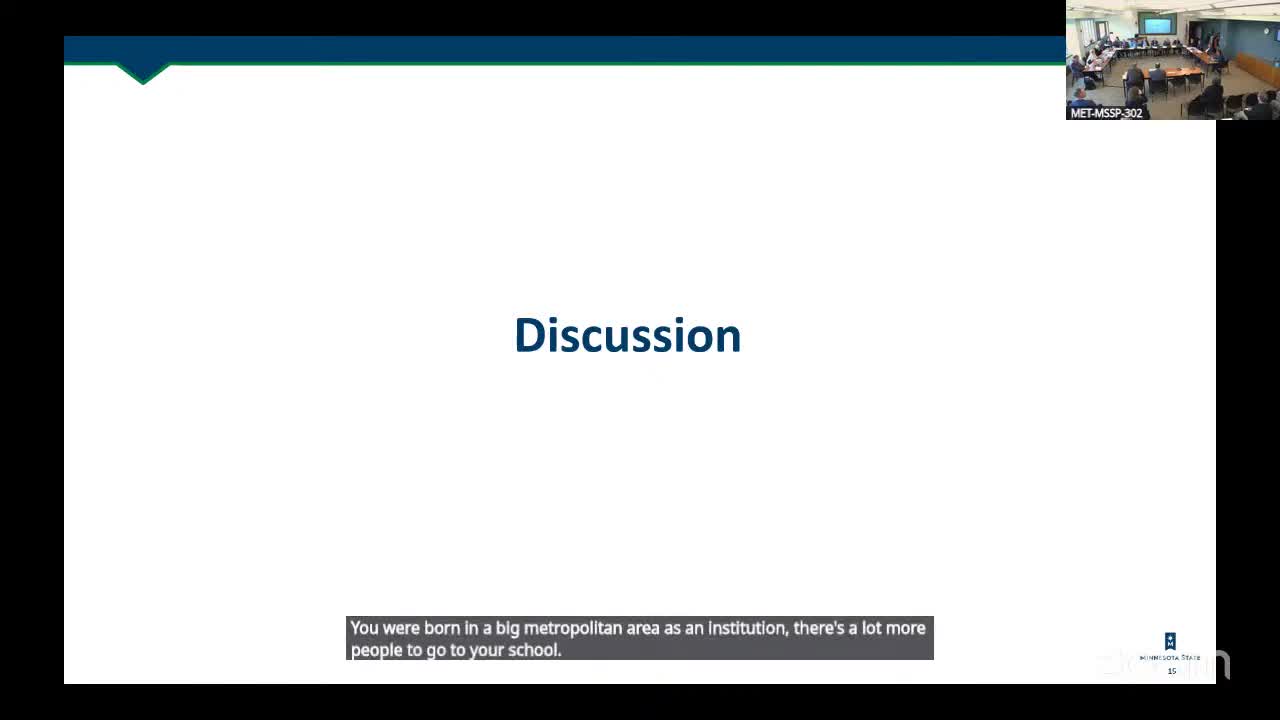University Trustees Discuss Financial Pressures and Impact on Student Services
May 21, 2025 | Minnesota State Colleges and Universities System, Public Universities Board of Trustees Meeting, School Boards, Minnesota
This article was created by AI summarizing key points discussed. AI makes mistakes, so for full details and context, please refer to the video of the full meeting. Please report any errors so we can fix them. Report an error »

On May 21, 2025, the Minnesota State Board of Trustees convened to address pressing financial challenges facing the state's higher education system. The discussions highlighted the significant costs associated with specialized programs, particularly in welding, and the broader implications of funding decisions on student services and institutional sustainability.
A key point raised during the meeting was the financial strain of maintaining programs that require extensive resources, such as lab assistance and materials. One trustee emphasized that the costs of these programs are often underestimated, leading to a disconnect between funding allocations and actual expenses. This concern reflects a long-standing issue within the system, where historical funding disparities have compounded over time, resulting in a need for a comprehensive reevaluation of tuition and fee structures.
Trustees also discussed the implications of recent financial forecasts, which predict worsening conditions in the coming years. The conversation revealed that while the current funding increase of 5.5% may provide temporary relief, it is insufficient to address the deeper issues at play. Students are particularly concerned about the potential loss of essential services, such as advising and mentoring, which are often the first to be cut during financial retrenchments. This trend raises alarms about the long-term impact on student experiences and educational outcomes.
The meeting underscored the necessity for a strategic approach to financial planning, with a focus on balancing immediate needs against future sustainability. As the board navigates these challenges, the importance of transparent communication with students and stakeholders remains critical. The discussions concluded with a recognition that without significant changes to funding models and resource allocation, the quality of education and support services could continue to decline, ultimately affecting the state's workforce and economic health.
Moving forward, the board will need to engage in deeper discussions about the structural changes required to ensure that Minnesota's higher education system can meet the demands of its students and the broader community. The urgency of these conversations is clear, as the decisions made today will shape the future of education in Minnesota for years to come.
A key point raised during the meeting was the financial strain of maintaining programs that require extensive resources, such as lab assistance and materials. One trustee emphasized that the costs of these programs are often underestimated, leading to a disconnect between funding allocations and actual expenses. This concern reflects a long-standing issue within the system, where historical funding disparities have compounded over time, resulting in a need for a comprehensive reevaluation of tuition and fee structures.
Trustees also discussed the implications of recent financial forecasts, which predict worsening conditions in the coming years. The conversation revealed that while the current funding increase of 5.5% may provide temporary relief, it is insufficient to address the deeper issues at play. Students are particularly concerned about the potential loss of essential services, such as advising and mentoring, which are often the first to be cut during financial retrenchments. This trend raises alarms about the long-term impact on student experiences and educational outcomes.
The meeting underscored the necessity for a strategic approach to financial planning, with a focus on balancing immediate needs against future sustainability. As the board navigates these challenges, the importance of transparent communication with students and stakeholders remains critical. The discussions concluded with a recognition that without significant changes to funding models and resource allocation, the quality of education and support services could continue to decline, ultimately affecting the state's workforce and economic health.
Moving forward, the board will need to engage in deeper discussions about the structural changes required to ensure that Minnesota's higher education system can meet the demands of its students and the broader community. The urgency of these conversations is clear, as the decisions made today will shape the future of education in Minnesota for years to come.
View full meeting
This article is based on a recent meeting—watch the full video and explore the complete transcript for deeper insights into the discussion.
View full meeting
